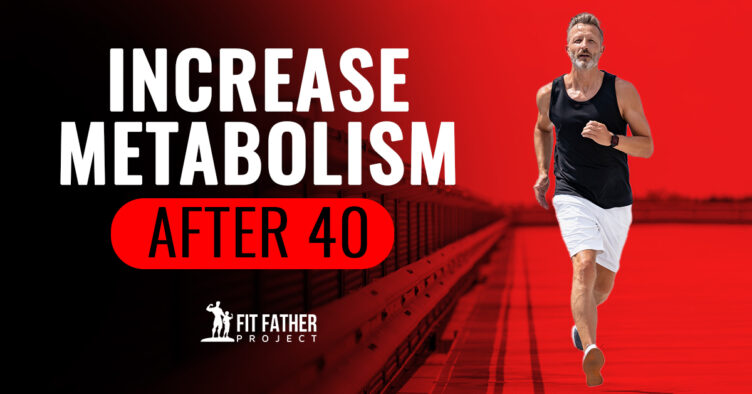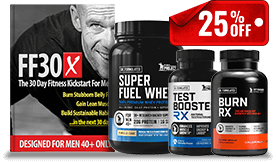Aging doesn't have to mean declining. You simply need to learn how to increase metabolism after 40 … and it's easier than you think!
When learning how to increase metabolism after 40, some information from the Department of Epidemiology and Social Medicine at Hiroshima University may help you understand metabolism and aging a little more.
“The basal metabolic rate decreases almost linearly with age.”
So … does that mean that as you age, you're destined to have a slow metabolism, regardless? In a word, no! The research also states that:
“It may also be possible to delay the aging process of various physiological functions by change of dietary habits, stopping smoking, and physical activity.”
That's why we've put this article together … to show you just how to make the changes you need.
Many of these tips will teach you how to increase metabolism after 40, starting TODAY!
In this article, you'll learn about:
-
- Simplifying nutrition.
-
- Reaching your hydration goals.
-
- The importance of sleep.
-
- Tying exercise and physical activity into any busy schedule.
-
- Detoxing your body.
-
- Getting your mindset right.
-
- And more!
Welcome to The Fit Father Project – Your New Nutrition and Workout Resource!
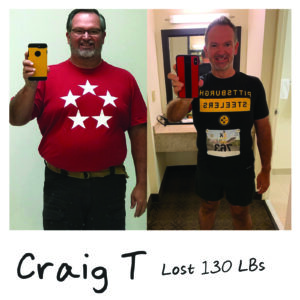
At the Fit Father Project, we specifically help busy men over 40 get back in shape by offering free information and resources on our website, backed up with our Fit Father 30X (FF30X) Program.
This article will teach you everything you need to know about how to increase metabolism after 40, but we're here to help you make a whole slew of healthy and sustainable lifestyle changes that will last.
Everything we do here at the Fit Father Project aims to simplify eating and exercise for you so you can get in great shape and stay strong and healthy for your family — without any unnecessary complications.
Sound good? Good. Let's dive in!
What Exactly Is Metabolism?
Metabolism is effectively the millions of chemical reactions that occur in your body every day. These reactions ensure your body runs smoothly.
However, when making general conversation about metabolism, we are most often referring to the process of turning food into energy or the rate at which your body uses calories.
The natural loss of muscle, which can be between 3-5% of your muscle mass every decade after you turn 30, plays a big part in slowing basal metabolic rate (BMR).
This is because muscle burns calories, even when you’re resting, so if you have less muscle but the same calorie intake, you’re going to have more energy than your body needs. As excess energy is stored as fat, you can end up with a cycle of linearly decreasing muscle and increasing fat … unless you learn how to increase metabolism after 40!
A higher metabolic rate can also improve general health and can also reduce the risk of age-related diseases.
Top Tips For How To Increase Metabolism After 40
The great thing is that nothing is set in stone, so learning how to increase metabolism after 40 is not as difficult as you may think.
Simply start implementing the 9 top tips we have for you below, and you’ll soon discover the new you, even in your 40s, 50s, and 60s!
Start Eating Properly
They say, ‘You are what you eat,' and it’s true!
You can’t eat fast food every day and not expect it to have an effect. No matter how hard fast-food restaurants try to produce healthy food, they can’t compete with what you can make at home.
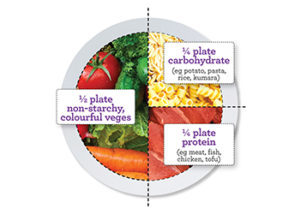
It’s time to stop the convenience of fast foods, remove processed items from your grocery list, and start cooking. Processed foods to be avoided are generally anything that comes in a bag or a box.
When shopping, stay to the edges of the store as this is where the fresh stuff is, and that’s the healthy choice.
You’ll want to focus on good quality carbs (preferably ones that are slow to process), protein, and plenty of vegetables.
A great way to incorporate this into your lifestyle and help to ensure you’re getting a balanced diet is to adopt our Perfect Plate approach to eating:
-
- Half of each plate should be vegetables, particularly lower-calorie, non-starchy ones (remember, green is good).
-
- One-fourth of each plate should be nutritious, protein-rich foods (turkey, chicken, lean beef, tuna).
-
- One-fourth of each plate should be fiber-rich carbohydrates (sweet potato, brown rice, quinoa).
Also, be sure to mix in healthy fats at each meal, consume three servings of dairy foods or plant-based alternatives (plant milk or plant-based yogurt) daily, and eat about two servings of fruit each day.
We’ve got plenty of recipe ideas to get you started. Check out this free one-day meal plan to find out more.
Stay Hydrated
Your body is approximately 60% water, and it is an essential part of transferring nutrients into cells and toxins out.
You need to make sure you stay hydrated, and this means aiming to drink three liters a day, or more.
However, you should note that while black, unsweetened tea and coffee do count as part of your liquid intake, they are also diuretics and can actually increase dehydration. Drink them but in moderation.
Water isn’t just good at increasing the efficiency of nutrient transfer and effectively increasing your metabolism. You can also drink it before you eat or when you feel hungry, to help reduce your appetite. This is an excellent way to ensure you’re not consuming too many calories.
Get 6-8 Hours Of Sleep Each Night
Sleep is when your body repairs itself, balances hormones, and processes the events of the day.
It’s essential that you get between 6-8 hours per night.
As you age, your cortisol levels rise (that’s the stress hormone), and so can thyroid levels (although that is more common in women), and insulin levels.
Unfortunately, insulin encourages fat storage, the production of cortisol hinders the production of other hormones, and thyroid level changes can leave you hungrier or less energetic.
Getting enough sleep is essential to balancing these hormones and allowing your body to do the job it was designed for. This will help to keep your metabolism high and your weight low.
Set yourself a bedtime that will ensure you get between 6-8 hours of sleep every night, and stick to it.
Improve your sleep quality at night with these 5 ways to sleep better!
Do 30 Minutes Of Physical Activity Each Day
There really is no substitute for getting active … but this doesn't mean you have to spend hours in the gym!
Just do simple things, like taking a walk or playing with your children. Feel free to do formal exercises and workouts, too, but make sure you're doing SOMETHING, each and every day.
If you haven’t exercised in a while, then it will be best to start with physical activity and move up to formal exercise. Again, the key is to schedule yourself 30 minutes every day.
When you do workout, be sure to get your heart racing, work up a sweat, and get out of breath.
When you exercise, your body must work harder to give you the nutrients you need, so you’ll be burning more energy. That means your metabolic rate will be increased, and it will remain elevated for a short while after the workout.
Regular exercise will increase your metabolic rate as your body gets fitter, healthier, and ready to perform when you need it to.
Start Resistance Training
You can take your exercise up a notch by adding in some metabolic resistance training. This simply means you’re using weights to exercise with.
You can use a machine in a gym, dumbbells at home, resistance bands, or simply use your own body weight.
The aim is to do a specific set of exercises with maximum effort for a short period of time. This will maximize the calorie burn when exercising, boost your metabolic rate after exercising, and increase your muscle mass.
As muscles burn calories when resting, more muscles mean a higher calorific burn and, in short, a higher metabolism.
Again, start small and build your metabolic resistance training routine. The most important thing is to schedule the time and do the exercise. You’ll naturally improve.
This metabolic resistance training workout plan will help you lose fat and burn calories!
Detox Your Digestive System
Throughout your life, you’ve piled all sorts of different foods into your body. Did you know it’s possible that your metabolism is slowing because of a buildup of food that hasn’t been fully digested?
You can view this like the furballs cats get. It’s not enough to cause a blockage, but it does slow the digestive process down, reducing the energy your body can take from the food and lowering your metabolism.
Detoxing your digestive system means eating more fiber, taking a daily probiotic, and sticking to a healthy eating regime, such as the Perfect Plate mentioned earlier.
It’s a good idea to avoid dairy, gluten, and even processed sugars for a few days, as this can help to prevent further clogging in your system as you try to clear it.
It’s not something you have to do every day, but a periodic detox is a good thing.
Detox Your Liver
Your liver's main job is to process and detoxify everything you put into your body. It also has a secondary job, which is to metabolize fat.
If the food and drink you consume each day are heavy on ingredients that take a lot of work to process, your liver is already working at capacity.
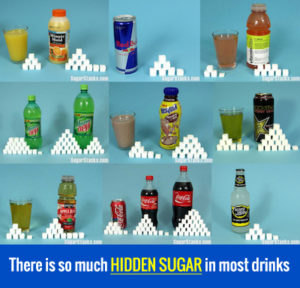
It, therefore, has little chance to do the other job of metabolizing fat efficiently. If fat is not being metabolized, guess what? It … gets … stored!
It is stored inside your organs (fatty liver and blocked arteries), around your organs (visceral fat), and around your mid-section (subcutaneous fat).
To detox your liver and get it working efficiently and effectively, you’ll need to cut right back on sugars, artificial sweeteners, and trans-fatty acids.
You should also review your medications with your doctor and avoid any painkillers where possible. Alongside this, reduce your alcohol intake and, again, stay hydrated!
Reduce Your Use of Chemicals
You’re exposed to potentially harmful toxins every day of the week, which can, and probably already do, slow your metabolism.
You may not think you keep anything like this at home, but take a look at your cleaning supplies. Almost everything you use will be filled with chemicals that could be negatively affecting your body. Don’t forget to look at your personal hygiene collection, too!
Get rid of chemical-based cleaning solutions and start using baking soda, white vinegar, and other natural, but effective products.
It’s also worth noting that water can contain chlorine and fluoride, both of which can potentially be harmful to your health. You may want to add water filters to your home water supply that can remove the chemicals and help you increase your metabolic rate.
Get Your Mindset Right
Having the right mindset around a healthier lifestyle is a key step, and actually, the first thing we ask guys to focus on in our FF30X program.
Some changes that are necessary to increase your metabolism are the reversal of habits that have been ingrained and practiced for possibly decades!
That is no easy feat unless you have your mindset dialed in and you develop a strong mission statement that focuses on your intention. An easy way to do this, is to ask yourself, “Why?” five times. Each answer aims to dive deeper into the one before, helping you understand your deep motivation for achieving this goal.
Here are the 10 BEST weight loss mindsets that you can have to achieve your weight loss goals!
A Quick Last Word
Boosting your metabolism after 40 means a natural increase in the calories burned by your body. Exercise is an obvious way to achieve this, as an increase in muscle mass makes your body more metabolically active. But, all of the other things we've suggested above will help boost your overall health and your quality of life.
Your metabolism doesn’t need to be in decline, you don’t need to lose muscle, and you can still enjoy eating!
All you need to discover how to increase your metabolism after 40 is in the FF30X program. We've already helped tens of thousands of men, and we are here to help you. Whether you’re after an eating plan or are looking to try a different workout plan, we have something that will help you boost your metabolism and achieve your goals.
Stuart gained his Diploma in Personal Training & Sports Medicine through Premier Global, back in 2001. In 2018, he completed his Level 1 Precision Nutrition qualification. Throughout his career in Fitness, Stuart has trained hundreds of clients, worked in almost every position in the industry, and ran his own successful training studio. After a hiatus away from the Fitness industry, working in Corporate Management and Finance, Stuart returned to what he loves… Fitness! This return led to a chance meeting with Dr. Balduzzi, and a place in the Fit Father Project team.Stuart Carter, Dip. PT, Precision Nutrition 1
C.O.O., The Fit Father Project
The FOUNDATIONS Program is created by Dr. Anthony Balduzzi for Men 40+ who want Lifelong Health. In just 6-Weeks following FOUNDATIONS, you'll experience: FOUNDATIONS has transformed 60,000 lives! Are you ready to experience true lasting health & results?Join our 6-Week Doctor Designed Health Program. You'll Gain Foundational Health for the Rest of Life.
*Please know that weight loss results & health changes/improvements vary from individual to individual; you may not achieve similar results. Always consult with your doctor before making health decisions. This is not medical advice – simply very well-researched info on how to increase metabolism after 40.

